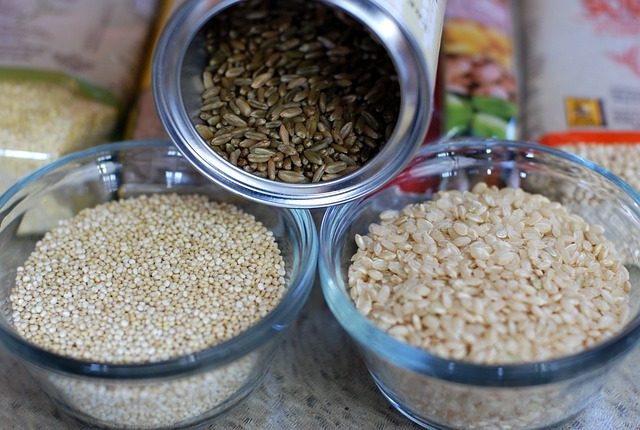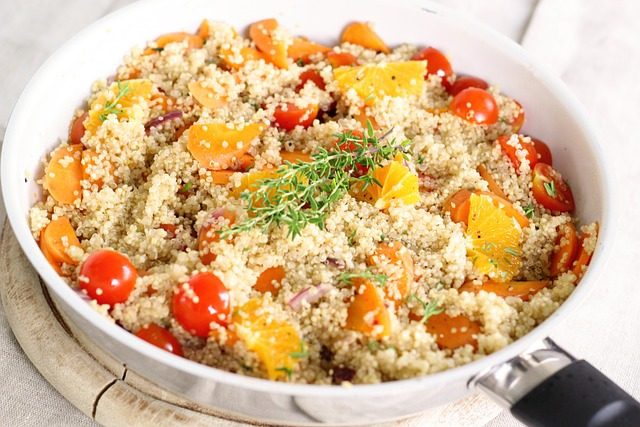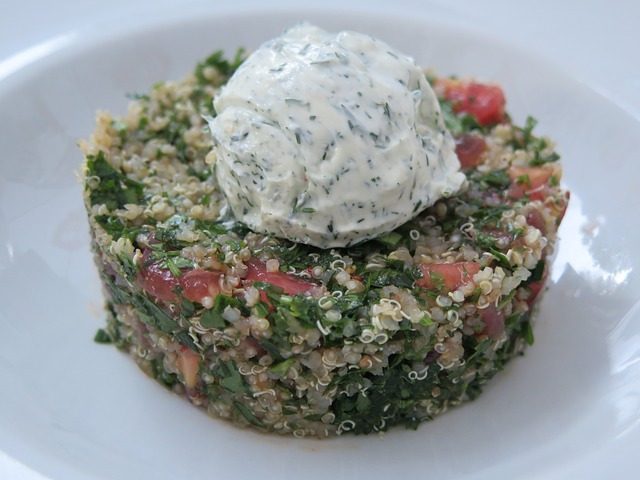


Quinoa for seniors makes a delicious and healthy meal in many countries. Quinoa is a new food item on the American market that is enjoying increasing popularity.
Pronounced “keen-wah,” this grain comes from the Andean regions of South America, where it was first cultivated and eaten by the Incas more than 5000 years ago.
It is a species of goosefoot that produces edible seeds. Known officially as a pseudo-grain, it is related to spinach, beets and Swiss chard.

Because quinoa is easy to chew and swallow, it is perfect for the elderly. In addition, it is very high in fiber, which reduces constipation. Here are some other healthy facts:
Nutritional Value – Quinoa is often referred to as a “superfood” because it provides so many nutrients essential to good health.
Quinoa is a good source of iron and calcium for good health. It is also a good source of phosphorus, magnesium, manganese, copper, zinc and folate.
Quinoa is also a good source of fiber, is low in fat and low in calories.
High in Protein – Quinoa is not only high in protein; it is considered a complete protein. That is, in contains all nine of the essential amino acids needed by the human body.
Quinoa can be an important source of protein for those who prefer meatless diets. It provides all the essential building blocks for cell replacement and muscle building.
Gluten-Free – Gluten is a protein found in wheat products that can be troublesome to those individuals with sensitive gastrointestinal symptoms.
Those with celiac disease, for example, must avoid all gluten products because they lack the enzyme to digest gluten.
Quinoa is a good alternative because it is completely gluten-free and can be used much like wheat flour and other wheat products.

Quinoa can be dressed up or dressed down to suit any dining occasion. Its versatility is one of its more beneficial properties.
Here are a few simple ways that quinoa can be served;
Breakfast Cereal – Quinoa can be cooked in milk to make a tasty breakfast cereal like oatmeal. Add cinnamon, brown sugar and fresh fruit for flavor.
Grain in Salad – Quinoa provides the grain element for hearty lunchtime salads, but with less carbohydrate and more protein. Its mild flavor blends well with other elements, such as asparagus, tomatoes, beans, olives, pine nuts or snap peas. Add lemon vinaigrette dressing for a savory treat.
Side Dish – Quinoa can make a wonderful side dish with chicken, fish or seafood. A bit of broth, butter, garlic and thyme makes it a tasty accompaniment.
In Baked Goods – Quinoa flour can be used in cookies, muffins, brownies, pancakes and quick breads. Toasting the flour gives these items a nutty flavor.
Quinoa Pasta – Pasta made from quinoa is a good alternative to wheat pasta for those individuals who have problems with gluten or blood sugar fluctuations.
According to Steven Gundry, M.D., quinoa is not a superfood but a super fad. He bases his opinion on the following information:
High Lectins and Saponins – He cites its high levels of lectins, which can damage the gut wall, and saponins, which can irritate the gut, especially in sensitive individuals.
Oxalate Content – Quinoa is rich in oxalates, which can be a concern for people monitoring their oxalate intake. While many healthy foods contain oxalates, those concerned about this aspect may choose to avoid quinoa.
Economic and Social Impact – The increasing export of quinoa to the U.S. has made it less affordable for the native populations in South America who traditionally rely on it, leading to socioeconomic issues.
For these reasons, Dr. Gundry concludes that quinoa is more of a super fad than a superfood and advises caution in its consumption.

Because of all its nutritional benefits, quinoa is a perfect fit for seniors. That is why so many elderly people in Peru and Bolivia enjoy it on a daily basis.
It’s also made into a hot drink, which is sold at Andean street stands and markets. It doesn’t just taste good, it’s also very good for anyone who eats it.
Check if you can find it at your local grocer, and help your elderly loved one benefit from all the extra nutrition.